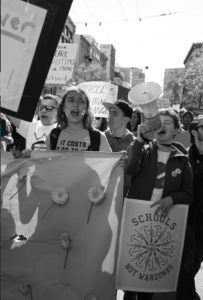With only 5% of the world’s population, the U.S. has 35-50 percent of the world’s civilian owned guns. America also has the least barriers to purchasing guns out of any country in the developed world, the only requirement being an instant background check and w training or a license. Along with the United States’ incredibly high ownership of guns, it also has the highest death by firearm rate in the developed world. Due to pressure from the NRA, The Center for Disease Control and Prevention (CDC) has been banned from studying gun deaths and how to regulate guns effectively. The following countries provide insight on how other nations have dramatically lowered their gun homicide rates.
Australia
Australia adopted new gun laws as a direct result of a mass shooting in 1996 when a man killed 35 people and injured 23 ar a seaside resort. It was the worst mass shooting in Australia’s history. In less than two weeks the conservative-led government brought about massive changes in the country’s gun laws. According to Molly McCluskey, a journalist for the Pacific Standard, this included the creation of the National Agreement on Firearms which, “all but prohibited automatic and semiautomatic assault rifles, stiffened licensing and ownership rules, and instituted a temporary gun buyback program that took some 600,000 assault weapons (about one-sixth of the national stock) out of public circulation.” In addition, the law required those who were seeking gun licenses to show a “genuine need” to own a firearm. In 2002, Australia further tightened gun laws by restricting the caliber, barrel length, and capacity for sport shooting handguns. In September 2017, Australia held a gun amnesty program and collected 26,000 unregistered firearms. These laws essentially ended mass shootings in Australia, drastically reducing gun violence across the nation.
Israel
In response to the shooting at Sandy Hook Elementary School, the NRA’s chief executive Wayne LaPierre claimed in an interview on NBC that “Israel had a whole lot of school shootings until they did one thing: They said, `We’re going to stop it,’ and they put armed security in every school and they have not had a problem since then.” LaPierre oversimplifies Israel’s gun policies by implying that arming teachers is the sole factor limiting mass shootings in Israel. In fact, Israel has one of the most extensive gun control systems in the world. In order to obtain a gun, citizens must go through extensive criminal and personal background checks and provide a bill of health from their doctor certifying their mental health. Gun-ownership is permitted mostly for citizens in potentially dangerous areas and for security guards. Gun-owners must also undergo background checks every three years to renew their liscense, and the majority of liscenses are only for 9 mm pistols with automatic rifle licenses strictly reserved for people in security jobs that require them. Also important, nearly every Israeli citizen must serve two years in the military where they are trained to use firearms, and they must redemonstrate their safety knowledge and training if they apply for a license. All in all, while there are some armed security guards in schools and public places to limit shootings, Israel still has extensive gun regulations that aim to prevent gun violence.
Japan
Japan has some of the most restrictive gun laws in the world, which include: thorough background checks; multiple mandatory tests; a requirement for firearm owners to inform authorities about how weapons and ammunition are stored; and a law that requires gun owners to have annual firearm inspections. Under Japan’s Firearm and Sword law, the only guns permitted are shotguns, air guns, guns that have research or industrial purposes, and guns for competitions. Japan has the lowest gun-homicide rate in the world at 1 in 10 million.
Norway
Norway ranks 10th worldwide in gun ownership, but has a firearm homicide rate 64 times lower than the United States. Norway has had few gun accidents and murders. This can be attributed to the country’s laws and culture around guns. In Norway one must obtain a valid sport shooting permit or a hunting license. Both permits require extensive training—nine hours for sport shooting and thirty hours for a hunting license. The low rate of gun-related accidents and crimes can also be attributed to how guns are treated in Norwegian culture. Guns in Norway are exclusively used for hunting and marksmanship. When not being used they are locked away. Additionally, police aren’t armed and criminals are rarely armed, making the whole situation safer for everyone.
Switzerland
Switzerland has the third highest gun ownership rate in the world, behind the United States and Yemen. Switzerland’s incredibly low street crime can be attributed to its culture around guns. Gun ownership isn’t seen as a right or as a necesity to protect the individual, it’s part of one’s patriotic duty. All men, ages 18 to 34, serve in the military and are given a weapon for their homes after completing training and background checks. The Army recommends that people keep different parts of the guns in seperate parts of the house for safety. There is a notion that Switzerland can be invaded quickly, so every man of age needs to be ready to fight. In fact, Switzerland might not have been invaded by Germany in World War II because Swiss men are armed and trained to shoot.
United Kingdom
Like Australia, the UK adopted new gun laws in the aftermath of a mass shooting. After the Hungerford Massacre, where 16 people were killed and 15 were injured, the UK passed the Firearms (Amendment) Act which expanded the list of banned weapons, including particular semiautomatic rifles, and increased the registration requirements for other weapons. The government also initiated a $200 million buy back program which led to the purchase of 162,000 guns and 700 tons of ammunition being collected from citizens.







